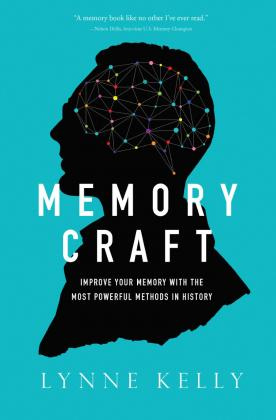Nonfiction Book Review: Memory Craft: Improve Your Memory with the Most Powerful Methods in History by Lynne Kelly
By David Ryan | Central Library
Of all the different mnemonics
or memory tricks I’ve come across over the years, I’ve always found the memory
palace to be the most fascinating. The palace is a place—real
or imagined—that allows you to logically store your facts and figures in an
orderly fashion. You can store nearly any fact or figure in your memory palace
from countries of the world in order of population to French verbs. The memory
palace is incredibly versatile. I first came across the concept of
memory palaces in, of all places, a Hannibal Lecter novel. The
murderous Dr. Lecter uses memory palaces as a type of mental library for souvenirs
both gruesome and beautiful.
Several
years later I discovered what is considered the most authoritative of memory
books, and learned that a memory palace is more traditionally used to hold
facts and figures. Published in 1966, The
Art of Memory by Frances Yates was so
influential that in 1999 it landed on the New
York Times top 100 nonfiction list.
I found her book fascinating, but highly academic; honestly, I
didn’t find easy directions to the construction of a memory palace.
Since then I’ve found many memory books that
deal with memory palaces and other memory techniques, but none as straightforward, entertaining, and inclusive as Memory
Craft by
Lynne Kelly. Kelly is a science writer and honorary research associate at La
Trobe University in Melbourne, Australia. She invites the reader to join her in
a lifelong exploration of memory techniques. In the process she reveals the history
of a multitude of different memory methods and cultures.
She
begins with visual alphabets, then moves on to medieval
bestiaries as peg systems before introducing memory palaces. She even includes
color photographs of her own visual alphabets for examples. This personal touch
is one reason I find her book so appealing. She journals her own experiments
with memory tools and gives you honest, and occasionally humorous, appraisals. At
the end of her exploration of memory methods, she enters the prestigious
Australian memory championship with mixed results.
A
critical aspect of Kelly’s work that must not be overlooked is the inclusion of
memory methods from non-Western cultures. Throughout the book she provides examples
from Africa, Australia, Inca, and Native American cultures of complex and
beautiful memory devices. In one chapter she builds memory boards, or lukasa,
using the methods of the African Luba tribe. Afterward, she comments, “I was
not prepared for the emotional impact when holding my memory boards.”
This
is an excellent introduction to memory methods from different ages and from a
multitude of cultures. Lynne Kelly provides detailed instructions on how to use the
various methods that are fun yet practical. I hope you enjoy constructing your
own memory palace.

Comments